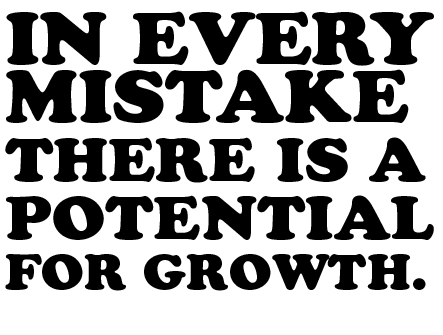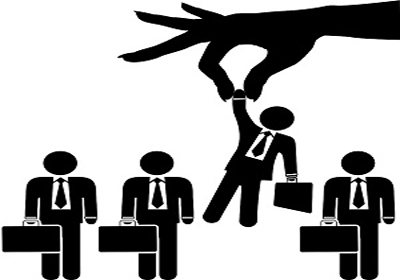“Creativity can solve almost any problem. The creative act, the defeat of habit by originality, overcomes everything.” George Lois
The quote by George hits the nail on the head – and sums up why brands and large enterprises prefer hiring agencies. They want to tap into every possible creative element to grow their business – and digital agencies have such creative workforce that is experienced and innovative.

Sometimes, however, companies fail and have their baggage, thus halting their success rate. Agencies need to trust their workers and offer their imagination wings to succeed in the marketplace to bring new ideas to the table. When you freeze the advancement of workers or refuse to help your staff, the company will struggle to introduce creativity into the ventures.
There are numerous companies who believe they’re generating innovations, but in reality; they’re preventing their staff’s advancement by imposing inhumane systems – an atmosphere that’s hostile and stifling innovation to death. Unknowingly, companies do things they shouldn’t do to suppress ingenuity because innovation keeps them alive in a cut-throat market.
“Imagination is more important than knowledge. For knowledge is limited to all we now know and understand, while imagination embraces the entire world, and all there ever will be to know and understand.” ― Albert Einstein
-
Halting Creative Disputes
One of the biggest animation companies ‘Pixar’ encourages creative disputes among its employees where employees come office and criticize previous day work.
In doing so, they have increased the production of ideas in 25 percent – and the effect is seen in their films, which always earns an Oscar nomination, and they have also bagged a lot of Academy’s.

The vital method of Pixar is known as shredding, and they argue not for the sake of argument but for seeking the seamless possibilities to expand their project and stay ahead in the race.
If you never allow creative freedom and open debate among your employees, then they will never learn to take constructive criticism and come out from their comfort zone.
-
Dependent on Group Brainstorming
So, you’re awarded a project you’ve always wanted – and you’ve made the idea with many sleepless nights? When will you do next? You probably want to ride your four wheels around the area, hooting joyfully because you’re up front and flipping your company’s stakes?
You wake up after partying hard last night, and arrange a meeting with all your employees going to work on the project to brainstorm an idea- and guess what? Only a handful bring ideas to the table – while others – only seem to listen.

You will then find various approaches to motivate the whole team to generate more ideas if you want to please your hard-earned customer? Bingo!-Bingo! You are correctly. For a smooth workflow you need a framework. Slack or Hipchat are several apps in which a whole team can participate, read the ideas of others and carve out their own ideas etc.
-
Scaling Consequences for Mistakes
“When asked for advice on painting, Claude Monet told people not to fear mistakes. The discipline of art requires constant experimentation, wherein errors are harbingers of original ideas because they introduce new directions for expression.
The mistake is outside the intended course of action, and it may present something that we never saw before, something unexpected and contradictory, something that may be put to use.” Shaun McNiff
Enterprises need to encourage mistakes because mistakes help in the growth of employees, and they risk new things for better results.

Moreover, when you encourage employees to experience and test different things, you will have enough data to pitch why the final report is best for your client’s business.
For example; if your customer is confused in selecting the right eCommerce platform, different reports can be made for different channels and the right solutions will come up; let’s say Magento, as it is preferred as the most reliable and stable eCommerce platform.
-
Use Monetary Compensation as Motivation
Who doesn’t love money? Well, we all do. That’s why we work hard to earn bucks for an easy life. Getting monetary compensation is great. It makes us jubilant and we jump out of joy. Probably, we feel on cloud nine and looking at the world as the real winner.
But, wait. I mean, seriously, is money everything that we are blinded taking as the best thing to happen during work reward? Is it so?

“The most common extrinsic motivator managers use is money, which doesn’t necessarily stop people from being creative. But in many situations, it doesn’t help either, especially when it leads people to feel that they are being bribed or controlled.” – Teresa Amabile
Sorry, if you don’t want to hear that; but, when it comes to motivating, money doesn’t fix problems. Not everyone needs cash bonuses. It gets the job done to some degree or to a large extent by inspiring people before the deadline but each coin has two sides.
Many people are searching for recognition in the organization or emailing with some words of gratitude and circulating among the workers to make him / her feel like a star or even a winning month / week award employee.
-
Promoting Micromanagers
If an under-served boss is promoted, many workers are disinterested in doing their job properly and their creative production is stopped because they feel uncomfortable and neglected.
All is worse than indifference, and workers appear to become uninterested in the business operations when it stirs in the company climate.
Often, delegating work to micromanagers gets in a wrong way. While micromanagers try to get the work done in a smart way that proves efficient for the company; the result derives from it are inappropriate.

A similar case happened in the year 2000, in 3M, when a manager overlooked new ideas and stuck with the product to mint profits. At the beginning, things worked well, but after some time, 3M began to lose its grace for which it was once known for. And who did that?
A manager who had vested so much power to change the entire track of company’s success – and side-tracked the creative ideas from the employees’.
-
Switching Goals Constantly
So you want to win the trust of your client by incorporating various creative elements that can make the project stand out of the crowd?
And, how do you do that? Simply by sticking to an end goal – and for the sake of business, not changing it every other day.

“I always know where it’s going. I’m writing a sentence, usually to much more than a sentence, too many paragraphs, close to the last chapter — it’s like a piece of music that you’re writing toward:
This is how it sounds when I get to the end. Because I wouldn’t know how I’m supposed to sound at the beginning unless I knew how I was going to sound when I got there.” John Irving, Cider House Rules
Knowing your destination makes thing easier, and you can plan and experiment different things to reaching there.
Hence; changing plans results in confusion and frustration. The final result can be humiliating for the company in front of the client because workers will only strive to complete the task without thinking where the project is going.
-
Hiring Like-minded Staff
It is the variations that make a position of interest to the world. How are you going to feel, living among like people?
You ‘re definitely going to enjoy it and yes it’s going to because you know how they’re going to respond to other circumstances and all those things; but you’re going to restrict your development as they’re probably going to have little or more experience because you know.

Moreover, you fail to count other important things that challenge us to strive for a better being.
The lack of diversity creates the problem because it blocks creative ideas and what employees think is almost similar to each other’s. Remember, the example of Pixar.
Organization recruits innovative people who have something new on the plate and make constructive criticism while giving their take to enhance the project. This is where the investment is speeding up the project.
When you’re building a team, you’ve got to assemble various people who can challenge each other for the best performance. Hence, many agencies fail in understanding it that block the internal creative process, and overall business suffers.
“Because when teams comprise people with various intellectual foundations and approaches to work — that is, different expertise and creative thinking styles — ideas often combine and combust in exciting and useful ways.” Amabile
-
Pressurizing Creative Output
When you put pressure, only crap comes out as a result. Hence; many agencies do this and see a dead end in a short span of time. Creativity doesn’t come out of pressure; it needs right environment and balance to tap new ideas for the best results.
When the brain goes under stress, it lacks creativity, instead of fostering ideas. Offering steam cooker environment to employees and thinking, you are going to squeeze the creativity elements from them, is the reason you see the dead end.

‘Kinex Media – Web Design Company‘ understands the importance of creativity and that’s the reason, we are ranking on Page one Google in Canada and looking to top in other domains, too.

